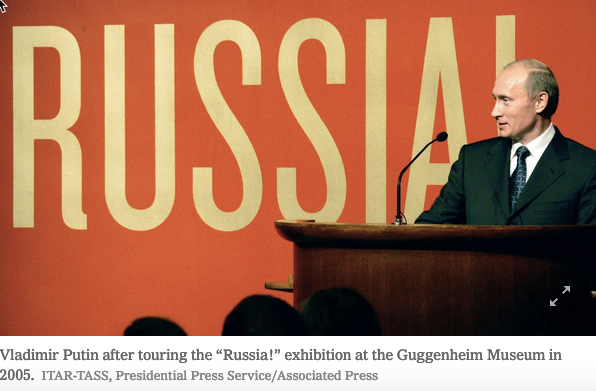Vladimir O. Potanin, a Russian billionaire who made his fortune in banking and natural resources, has been a donor and board member of the Guggenheim Museum since 2002. More recently he gave $6.45 million to the Kennedy Center in Washington, which used some of the money to install the “Russian Lounge,” a meeting space, in the performing arts complex created, in part, by Congress. His name is now inscribed on a wall there.
At the New Museum in Manhattan, another wealthy oligarch, Leonid Mikhelson, helped underwrite a 2011 exhibition through his foundation, which is dedicated to the appreciation of Russian contemporary art. Two years later, the museum named him a trustee, a position he held until last year — three years after the company he directs was placed under sanctions by the United States government.
Fort Ross, a California state historic park that commemorates a 19th-century Russian settlement in Sonoma County, was struggling in 2010 when Viktor F. Vekselberg, another oligarch, stepped in to help financially. His foundation continued as a patron until last year, when sanctions were imposed on him and his company, and the Justice Department told the park’s caretakers to stop taking his money.
Since the fall of the Soviet Union, rich Russians have emerged as influential patrons of the arts and Western cultural organizations have often been the beneficiaries. Carnegie Hall, the Metropolitan Museum of Art, the Art Institute of Chicago, the Brooklyn Academy of Music and Lincoln Center are among those who have received gifts from moneyed Russians or the companies they control over the past decade.




